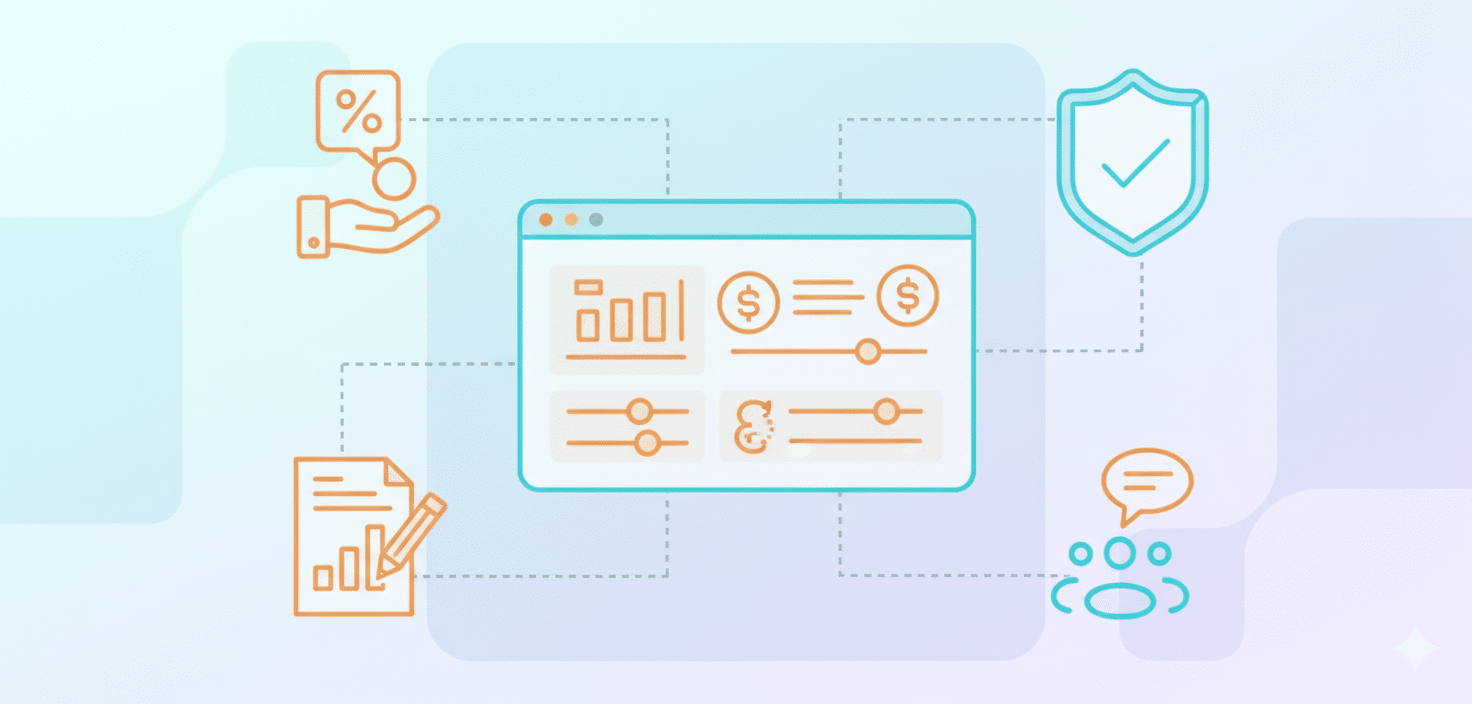가격 전략
SaaS 가격 책정 관리란 무엇인가요?

SaaS 가격 관리란 무엇인가요?
SaaS 가격 관리는 SaaS 조직이 구독 가격 정책을 결정, 수정 및 최적화하는 데 사용하는 관행과 활동을 포함합니다.
SaaS 가격 관리는 고객에게 제공되는 가치와 시장 변동을 일치시켜 SaaS 비즈니스의 수익을 창출하는 것을 목표로 합니다. 그러나 이는 고객의 사용량, 패턴 및 기능 선택과 관련된 행동에 대한 이해에 따라 달라집니다.
제대로 이루어진다면, SaaS 가격 책정 관리는 고객 확보 및 고객 유지를 강화할 가능성이 높습니다.
SaaS 대 기존 가격 책정: 무엇이 다른가요?
주요 차이점은 수익 모델에 있습니다:
- SaaS 가격 책정은 일반적으로 구독 모델을 기반으로 합니다. 사용자는 장기간에 걸쳐 도구에 대한 액세스 비용을 지불합니다. 이는 기업이 일관된 수익 흐름을 확보하는 데 도움이 됩니다. 또한, SaaS 가격 책정은 고객 및 시장 요구 사항에 맞춰 조정될 수 있습니다.
- 전통적인 가격 책정은 높은 가치의 일회성 구매로 이루어져 있으며 변경하기 어렵습니다. 또한, 이 방식을 따르는 기업들은 지원과 같은 서비스에 대해 추가 비용을 요구하는 경향이 있습니다.
일반적인 SaaS 가격 책정 모델은 무엇인가요?
SaaS 가격 모델은 다양한 유형이 있으며, 여러 SaaS 기업의 요구 사항에 부응합니다.
|
가격 책정 전략 |
설명 |
주요 장점 |
주요 단점 |
|
구독 |
접근을 위한 정기 결제 (포괄적인 모델) |
예측 가능한 반복 수익, 고객 유연성 |
위험 이탈 가치가 지속적으로 전달되지 않는다면 |
|
고정 요금제 |
모든 기능/서비스에 대한 단일 가격 |
이해하기 쉽고 마케팅하기 용이함 |
다양한 니즈를 충족시키지 못할 수 있음 (수익 기회 상실 또는 소규모 고객 유치 실패) |
|
계층형 |
고유한 기능 세트를 가진 여러 패키지/레벨 |
다양한 니즈를 가진 여러 고객 세그먼트 충족 |
가능함 설계하기 복잡함 고객을 혼란스럽게 함 |
|
사용량 기반 |
고객은 사용량에 따라 비용 지불 (예: API 호출, 데이터 저장) |
변동성 있는 니즈를 가진 고객에게 매력적임 (사용한 만큼 지불) |
예측 불가능한 수익, 비용에 대한 고객 불안감 |
|
사용자당 |
개별 사용자 수에 따른 가격 책정 |
사용자 증가에 따른 확장이 용이함 |
팀 내 협업/공유를 저해할 수 있음 |
|
기능별 |
특정 기능 잠금 해제 여부에 따른 가격 책정 |
인지 가치 증대, 세부적인 맞춤 설정 가능 |
기능 사일로를 초래하고 전체 플랫폼 도입을 제한할 수 있음 |
|
프리미엄 |
기본 버전은 무료, 프리미엄 기능은 유료 |
방대한 사용자 기반 확보, 상향 판매 기회 |
필요한 것은 높은 전환율 유료 플랜으로의 지속 가능성을 위한 전환 |
주요 SaaS 가격 책정 지표: 어떻게 사용되나요?
SaaS 가격 책정 지표는 일반적으로 사용되는 SaaS 지표로, 다양한 관점에서 수익을 분석합니다:
|
지표 |
성명 |
주요 용도 |
|
MRR |
월별 재무 안정성 및 성장 궤적을 평가합니다. |
|
|
ARR |
장기 수익 예측 및 가치 평가. |
|
|
CLV |
단일 고객 관계에서 예상되는 총 수익을 측정합니다. |
|
|
NRR |
시간이 지남에 따라 기존 고객 기반으로부터의 수익 성장(또는 손실)을 측정합니다(업셀/다운셀/이탈 포함). |
|
|
이탈률 |
비율 고객/수익 이탈 |
고객 유지 문제를 식별하고 안정성을 평가합니다. |
|
CAC |
영업 및 마케팅 활동의 비용 효율성을 평가합니다. |
내재된 복잡성 때문에 사용량 기반 또는 하이브리드 모델에서는 정확한 계산이 필수적입니다.
적합한 가격 책정 단위를 선택하는 방법은?
SaaS 기업은 가격 책정 방식을 어떻게 구축할지 결정해야 합니다.
이는 가격 책정 방식이 파생될 핵심 기능을 살펴보는 것을 의미합니다 (사용자당, 사용량당, 기능당).
SaaS 기업이 이 측면을 결정하면, 다음 단계는 다음과 같습니다:
- 내부 회사 분석을 실시하십시오. 이는 제품, 기능 및 생산 비용을 이해하는 것을 의미합니다.
- 시장 조사를 실시하십시오. 귀사의 특정 산업, 경쟁업체, 그리고 고객의 지불 의사를 확인하십시오.
- 가격 책정 기준을 선정하십시오. 내부 및 외부 조사를 통해 발견한 모든 것을 바탕으로, 가격을 책정할 기능이 사용자에게 가치를 제공하는 것인지 확인해야 합니다.
판매를 계획하는 각 지역에 대해 이 가격 책정 평가를 수행하고, 저희의 조사 결과에 따라 전략을 조정해 보십시오.
결론
SaaS 가격 관리는 귀사의 SaaS 제품에 대한 적절한 가격을 결정하는 데 관련된 모든 프로세스와 요소를 포괄합니다. 귀사의 제안을 수익화하려면 시장 및 타겟 고객 연구부터 생산 비용 및 기대 이익 분석까지 여러 측면에 집중해야 합니다.